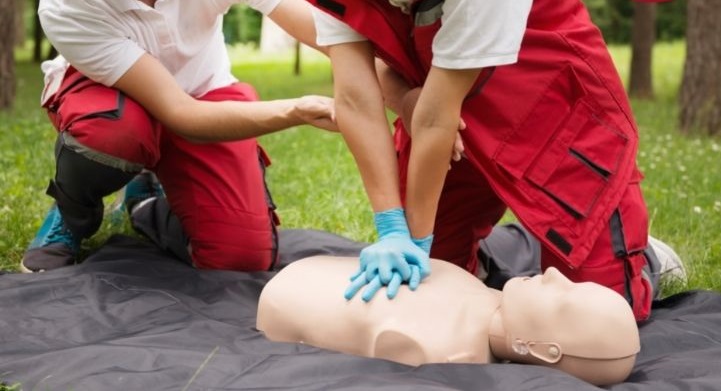Introduction
In our hectic world, emergencies can strike without caution. Whether it's a small injury, a medical emergency, or a life-threatening circumstance, knowing exactly how to supply emergency treatment can make all the distinction. This is where a First Help course comes into play. Many individuals might wonder what they can gain from such training, and this post intends to shed light on that.
By enrolling in a First Aid and CPR course, you do not just learn about bandaging wounds or performing mouth-to-mouth resuscitation; you outfit on your own with very useful abilities that might conserve lives. So, just what will you find out in an extensive training course? Let's study the details.
First Help Basics: What You'll Discover in an Extensive Course
Understanding Initial Aid
What is First Aid?

First aid describes the first aid given to a person struggling with an injury or illness until specialist clinical help gets here. It incorporates various techniques and skills ranging from basic wound like lifesaving methods like CPR (Cardiopulmonary Resuscitation).
Importance of Emergency treatment Training
Why Should You Take an Emergency Treatment Course?
Taking a First Aid course is crucial for a number of factors:
- Confidence: Recognizing just how to respond in emergencies can impart confidence. Life-Saving Skills: The capability to execute CPR or assist with choking can conserve lives. Career Improvement: Many professions require qualification in first aid. Community Duty: Learning means you can assist others effectively.
Overview of CPR
What is CPR?
CPR, or Cardiopulmonary Resuscitation, is an emergency situation procedure performed when someone's heartbeat or breathing has stopped. It combines upper body compressions with rescue breaths to keep blood flow and oxygenation until expert assistance arrives.
The Framework of a Comprehensive First Aid Course
What Does a First Aid Course Include?
A well-shaped First Help and mouth-to-mouth resuscitation course usually covers the complying with topics:
Introduction to First Aid Legal and Ethical Considerations Scene Safety Basic Life Assistance (BLS) CPR Techniques Choking Relief Wound Care Management Burn Treatment Managing Shock Recognizing Clinical Emergencies Using an Automated External Defibrillator (AED)Legal Aspects of First Aid
Are There Legal Effects Associated With Giving First Aid?
Yes, providing emergency treatment does bring lawful obligations known as "Good Samaritan legislations." These laws safeguard people that aid others in emergencies, provided their actions are affordable and not reckless.
Scene Safety: The Very First Step
How Do You Guarantee Scene Safety?
Ensuring scene safety entails examining the setting prior to approaching the sufferer:
- Look for prospective threats (web traffic, fire). Make sure it's risk-free for both you and the victim.
Basic Life Assistance (BLS)
What Role Does BLS Play in Emergency Situations?
Basic Life Assistance consists of the fundamentals of maintaining life functions up until further clinical aid shows up. This area covers vital skills such as:
- Checking responsiveness Activating emergency situation services Performing premium chest compressions
Advanced CPR Techniques
What Are Advanced Techniques Covered in Mouth-to-mouth Resuscitation Courses?
Advanced strategies may include:
- Two-rescuer CPR Use of obstacle gadgets for rescue breaths Special factors to consider for babies and kids
Choking Relief Techniques
How Do You Aid Someone That is Choking?
Choking relief entails two critical methods:
The Heimlich maneuver for adults. Back blows and upper body drives for infants.Wound Care Management
How Do You Properly Manage Wounds?
Effective injury monitoring involves:
- Cleaning the injury with saline or tidy water. Applying antibiotic ointment. Covering it with clean and sterile dressings.
Burn Treatment
What Are Effective Techniques for Dealing With Burns?
Burn therapy differs by level:
Cool the melt under running water. Cover it with non-stick dressings. Seek clinical attention for severe cases.Managing Shock
How Is Shock Identified and Treated?
Recognizing shock consists of seeking signs like light skin, quick pulse, or confusion:


Recognizing Clinical Emergencies
What Kinds of Medical Emergencies Need To You Realize Of?
Common clinical emergencies consist of:
- Heart assaults Stroke Severe allergies Comprehending these conditions helps you act quickly.
Using an Automated External Defibrillator (AED)
How Do You Utilize an AED Correctly?
Using an AED includes transforming it on, connecting pads according to illustrations on the tool, and adhering to voice triggers carefully.
Importance of Continual Learning
Why Is Continual Discovering Important in Emergency Treatment Training?
Continuous discovering guarantees you stay updated on ideal methods and new protocols in emergency treatment care.
FAQs About First Aid Courses
What Is Included in a Standard Emergency Treatment Course?- A basic training course generally covers standard life support, wound administration, choking alleviation techniques, and lawful considerations.
- Most courses vary from 6 hours to 16 hours depending upon the deepness of material covered.
- Yes, upon successful conclusion of a lot of training courses, individuals get a first help certificate, which is generally legitimate for 2 years.
- Yes! Lots of organizations offer on-line training courses that give adaptable learning environments while still being effective.
- Absolutely! Hands-on technique is crucial for understanding abilities like breast compressions and using AEDs effectively.
- Generally, there are no age constraints; however, participants should be mentally proficient to find out these life-saving skills effectively.
Conclusion
Enrolling in an extensive first aid course furnishes people with crucial knowledge that can conserve lives during emergency situations-- whether in the house, work, or out in public areas! From understanding standard life assistance procedures such as CPR to learning how to manage wounds properly or identify indications of shock-- these programs give vital training that any individual can benefit from!
As we browse with our daily lives filled with changability-- what better method than preparing ourselves via knowledge obtained from organized training sessions focused on conserving lives?
In final thought-- if you're contemplating taking up any form of first-aid training-- never ever be reluctant! Outfit yourself today with these effective tools Additional resources because preparedness really makes all the distinction when every 2nd counts!